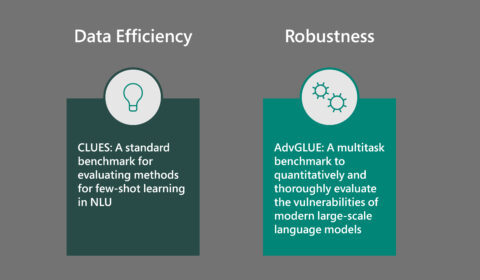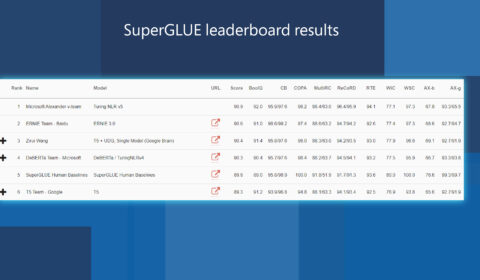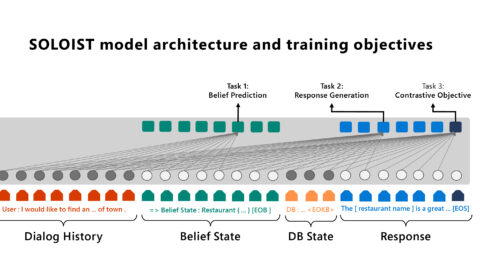News & features

You get what you measure: New NLU benchmarks for few-shot learning and robustness evaluation
| Jianfeng Gao and Ahmed Awadallah
Recent progress in natural language understanding (NLU) has been driven in part by the availability of large-scale benchmarks that provide an environment for researchers to test and measure the performance of AI models. Most of these benchmarks are designed for…

Efficiently and effectively scaling up language model pretraining for best language representation model on GLUE and SuperGLUE
| Jianfeng Gao and Saurabh Tiwary
As part of Microsoft AI at Scale (opens in new tab), the Turing family of NLP models are being used at scale across Microsoft to enable the next generation of AI experiences. Today, we are happy to announce that the…

SOLOIST: Pairing transfer learning and machine teaching to advance task bots at scale
| Baolin Peng, Chunyuan Li, Jinchao Li, Lars Liden, and Jianfeng Gao
The increasing use of personal assistants and messaging applications has spurred interest in building task-oriented dialog systems (or task bots) that can communicate with users through natural language to accomplish a wide range of tasks, such as restaurant booking, weather…

The science behind semantic search: How AI from Bing is powering Azure Cognitive Search
| Rangan Majumder, Alec Berntson, Daxin Jiang (姜大昕), Jianfeng Gao, Furu Wei, and Nan Duan
Azure Cognitive Search (opens in new tab) is a cloud search service that gives developers APIs and tools to build rich search experiences over private, heterogeneous content in web, mobile, and enterprise applications. It has multiple components, including an API for indexing and querying, seamless integration through Azure data ingestion, deep…

HEXA: Self-supervised pretraining with hard examples improves visual representations
| Chunyuan Li, Lei Zhang, and Jianfeng Gao
Humans perceive the world through observing a large number of visual scenes around us and then effectively generalizing—in other words, interpreting and identifying scenes they haven’t encountered before—without heavily relying on labeled annotations for every single scene. One of the…

VinVL: Advancing the state of the art for vision-language models
| Pengchuan Zhang, Lei Zhang, and Jianfeng Gao
Humans understand the world by perceiving and fusing information from multiple channels, such as images viewed by the eyes, voices heard by the ears, and other forms of sensory input. One of the core aspirations in AI is to develop…

Microsoft DeBERTa surpasses human performance on the SuperGLUE benchmark
| Pengcheng He, Xiaodong Liu, Jianfeng Gao, and Weizhu Chen
Natural language understanding (NLU) is one of the longest running goals in AI, and SuperGLUE is currently among the most challenging benchmarks for evaluating NLU models. The benchmark consists of a wide range of NLU tasks, including question answering, natural…

Domain-specific language model pretraining for biomedical natural language processing
| Hoifung Poon and Jianfeng Gao
COVID-19 highlights a perennial problem facing scientists around the globe: how do we stay up to date with the cutting edge of scientific knowledge? In just a few months since the pandemic emerged, tens of thousands of research papers have…
In the news | VentureBeat
Microsoft researchers claim ‘state-of-the-art’ biomedical NLP model
In a paper published on the preprint server Arxiv.org, Microsoft researchers propose an AI technique they call domain-specific language model pretraining for biomedical natural language processing (NLP). By compiling a “comprehensive” biomedical (NLP) benchmark from publicly available data sets, the coauthors claim they managed to…

